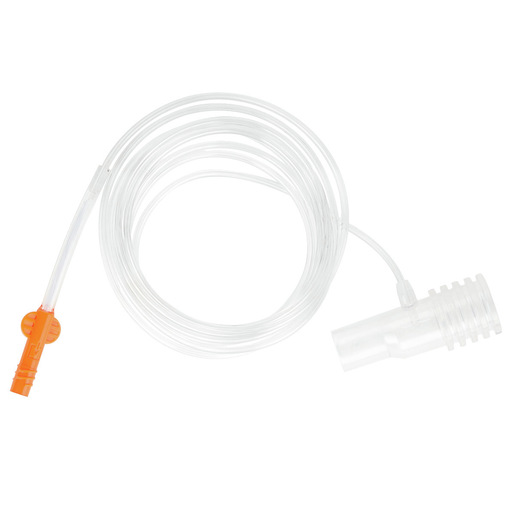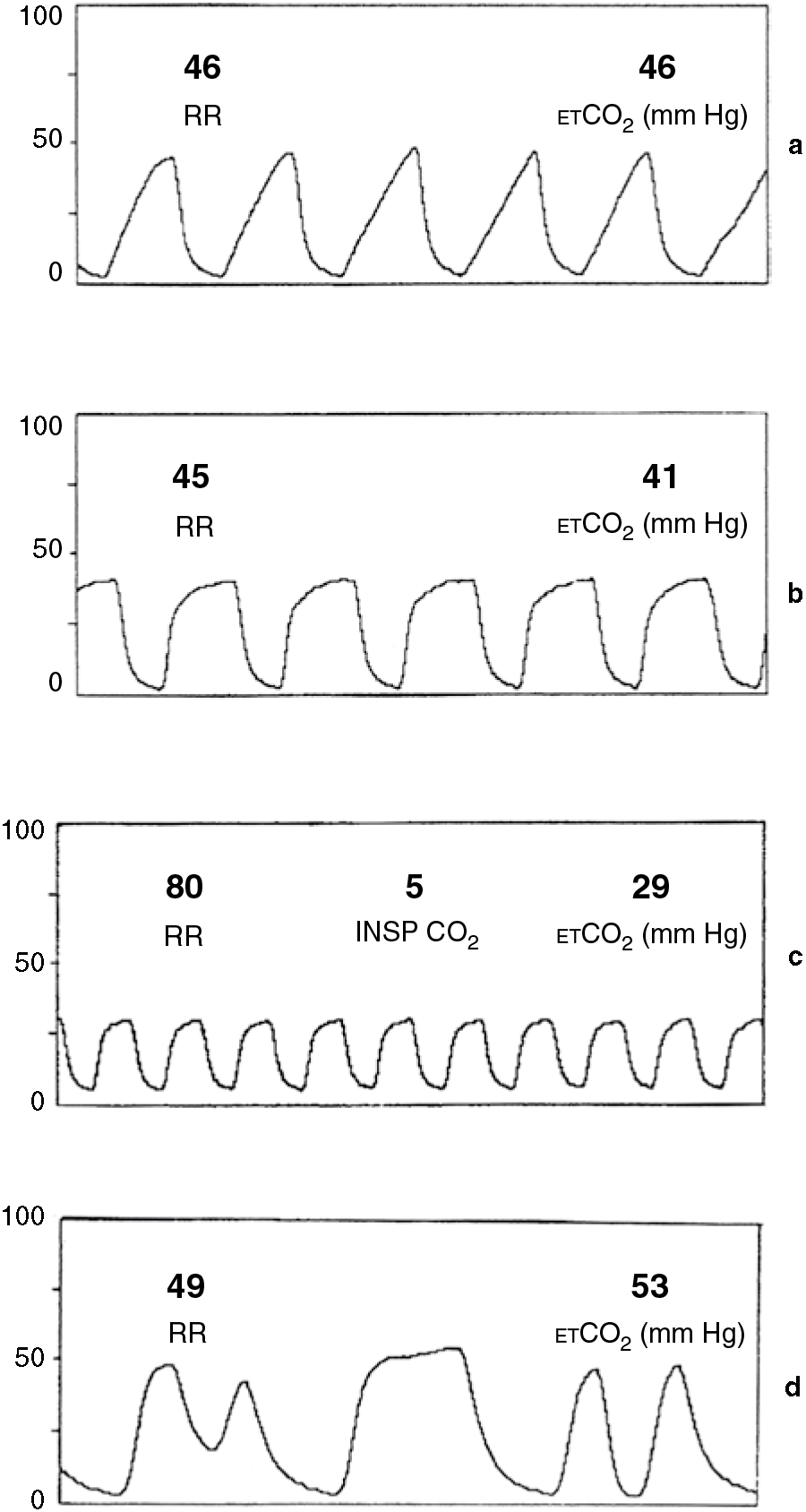end tidal co2 range pediatrics
End-tidal carbon dioxide ETco 2 monitoring provides valuable information about CO 2 production and clearance ventilation. There are gender-specific ranges only for.

Exhaled End Tidal Carbon Dioxide As A Predictor Of Lactate And Pediatric Sepsis The American Journal Of Emergency Medicine
Variability of difference scores was not related to range of mean scores r 08 age r 09 or respiratory rate r 25.
. A clinically relevant difference was observed in the peak pressure BTPS 202 cm H 2 O versus ATPD 218 cm H 2 O. So the short answer is you are right about the ranges 35-45 but that. Among the 322 children who were randomized 55 17 met pediatric criteria for hypoventilation.
It is the standard of care during certain procedures such as intubations and sedations and can be used in variety of clinical situations. End-tidal CO2 measured by an oralnasal cannula capnometry circuit is a noninvasive method of assessing indirect measurements of PCO2. One hundred thirty of 146 subjects who were approached were included in the final analysis.
End-tidal carbon dioxide levels and serum bicarbonate. CO2 contentbicarbdissolved CO2 Cordblood Child. Laboratory CPR studies indicate end-tidal carbon dioxide ETCO2 during CPR is.
Also called capnometry or capnography this noninvasive technique provides a breath-by-breath analysis and a continuous recording of ventilatory status. Utility of end-tidal carbon dioxide detector during stabilization and transport of critically ill children. Both end-tidal CO2 monitors and pulse oximetry devices work closely together to help monitor the respiratory status of a patient.
End tidal Co2 ranges vary slightly from actual PaCo2 and can be affected by many factors depending on the condition of the patients lungs. We separately analysed the influence of age on the extent and incidence of negative PaCO 2 ETCO 2 differences. To determine the accuracy and precision of end-tidal CO2 monitoring in NICU patientsDesign.
This was a prospective blinded observational study of children 3-17 years old treated for acute asthma in a pediatric emergency department ED. 6 to 30 characters long. Listed in this appendix are pediatric normal ranges for some of the more common hematology and chemistry tests along with the references from which they were obtained.
More than 95 of pediatric IHCAs in the US occur in intensive care units ICU 6. End-tidal carbon dioxide monitoring in pediatric emergencies Pediatr Emerg Care. Accuracy of end-tidal PCO2 measurements using a sidestream capnometer in infants and children ventilated with the Sechrist infant ventilator.
Arterial to end-tidal carbon dioxide tension difference in children with congenital heart disease. Br J Anaesth 2001. The mean TST with EtCO 2 50 mmHg was modestly correlated with apnea-hypopnea index AHI r 033.
21 Hillier SC Badgwell JM Mcleod ME Creighton RE Lerman J. Quality EtCO 2 waveforms were present for 75 of total sleep time TST in 876 of 960 913 screening polysomnograms. Type of capnometry identified 91 of the instances when the arterial CO 2 pressure was between 34 and 54 mm Hg using an end-tidal range of 29 to 45 mm Hg.
For a person with normal lungs the difference between end tidal and Paco2 can vary between 5-8mmHg depending on the book your reading. Physiologic dead space venous admixture and the arterial to end-tidal carbon dioxide difference in infants and children undergoing cardiac surgery. Both the first and second end-tidal CO2 readings in the C range correlated significantly with short-term survival P 01 and P 001 respectively.
End tidal co2 range pediatrics Tuesday June 21 2022 Edit. We would like to thank to Drs. However et CO 2 may be underused in the PED setting.
Et al End tidal Carbon Dioxide Monitoring in very low birth weight infants. End-tidal CO 2 Et CO2 is the standard in operative care along with pulse oximetry for ventilation assessmentIt is known to be less accurate in the infant population than in adults. Takahashi D et al.
Authors M S. Two patients were eventually discharged from the hospital. Prospective observations during CPR in.
Effect of tidal volume and end tracheal tube leakage on end-tidal CO2 in very low birth weight infants. Many neonatal intensive care units NICU have converted to utilizing transcutaneous CO 2 tcP CO2 monitoringThis study aimed to compare perioperative Et CO2 to tcP CO2 in the. Although the normal range for CO2 should be between 35-45mmHg CO2 monitoring gives healthcare providers a lot more.
The purpose of this study was to evaluate the association between end-tidal carbon dioxide EtCO2 values and disease severity among children with acute asthma. Although many do not have invasive arterial blood pressure monitoring during CPR another potential physiologic ap-proach to assess CPR is quantitative capnometry 347. Patient monitor EKG ECG Holter EEG Pulse oximeter B-Ultrasound Scanner Our products have passed CE FDA certificate.
Woodham and Railton for their comments on our work dealing with negative PaCO 2 ETCO 2 differences as reported with sidestream carbon dioxide monitoring during paediatric general anaesthesia 1. End-tidal CO2 monitoring is a non-invasive way to monitor a patients carbon dioxide levels. November 11 2012.
End-tidal carbon dioxide monitoring in pediatrics - clinical applications J Postgrad Med. In patients with normal pulmonary function CO 2 normally 35 to 45 mm Hg and ETco 2 should correlate closely with a deviation of about 2 to 5 mm Hg. Correlation and agreement with arterial carbon dioxide.
End-tidal CO 2 Et CO2 is the standard in operative care along with pulse oximetry for ventilation assessmentIt is known to be less. In fact its commonly called the. 2012 Vol 47 4 367-372.
End-tidal carbon dioxide CO2 monitoring is useful in the prehospital setting emergency department intensive care unit and operating room. Evaluation of an end-tidal CO2 detector during pediatric cardiopulmonary resuscitation Pediatrics. To determine the utility of a disposable colorimetric end-tidal CO2 detector during pediatric cardiopulmonary resuscitation CPR for 1 confirming endotracheal tube ETT position and 2 assessing the relationship between end-tidal CO2 recorded by this method and outcome of pediatric CPRDesignsetting.
Measurements and Results. End-tidal CO2 monitoring is an exciting non-invasive technology that is more commonly used in the emergency department intensive care unit and in the prehospital setting. End tidal co2 range pediatrics Monday March 28 2022 Edit.
Author M S Bhende 1. End Tidal Carbon Dioxide Recording Of Ventilated Children In Picu N 535 Download Scientific Diagram Continuous Capnography In Pediatric. For those for whom laboratory studies were performed the mean serum bicarbonate concentration was 173 43 mmolL and the mean end-tidal carbon dioxide level was 342 52 mm Hg.
End-tidal CO 2 et CO 2 monitoring is not a new modality in the pediatric emergency department PED and emergency department. Authors Kevin J. The median tidal volume in all patients was 729 mLkg Table 1 where the difference in median tidal volume was clinically insignificant BTPS 727 mL kg 1 versus ATPD 731 mL kg 1.

Basic Capnography Interpretation Nuem Blog

Pdf Applications Of End Tidal Carbon Dioxide Etco2 Monitoring In Emergency Department A Narrative Review Semantic Scholar

Carbon Dioxide Monitoring In Children A Narrative Review Of Physiology Value And Pitfalls In Clinical Practice Humphreys 2021 Pediatric Anesthesia Wiley Online Library
Emdocs Net Emergency Medicine Educationend Tidal Co2 In Tbi Emdocs Net Emergency Medicine Education

Continuous Capnography In Pediatric Intensive Care Semantic Scholar

Table 1 From Continuous Capnography In Pediatric Intensive Care Semantic Scholar

The Exciting Future Of Pediatric Capnography Bound Tree

Contec Ca10s Side Stream Capnograph End Tidal Co2 Chargeable Etco2 Pr

Pdf Delivery Room End Tidal Co2 Monitoring In Preterm Infants 32 Weeks

Neonatal Monitoring Chapter 10 Capnography

Capnography By Craig Smallwood Rrt For Openpediatrics Youtube

Pdf Capnography In The Pediatric Emergency Department Clinical Applications Semantic Scholar

End Tidal Capnography Can Be Useful For Detecting Diabetic Ketoacidosis Monitoring Copd Page 2 Of 4 Acep Now Page 2
Emdocs Net Emergency Medicine Educationcapnography In The Ed Emdocs Net Emergency Medicine Education
